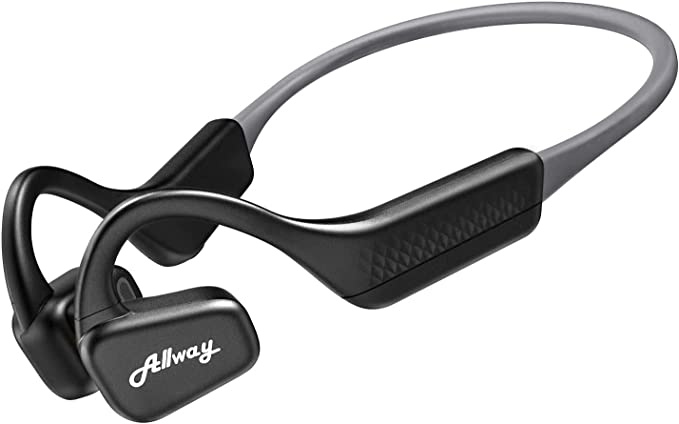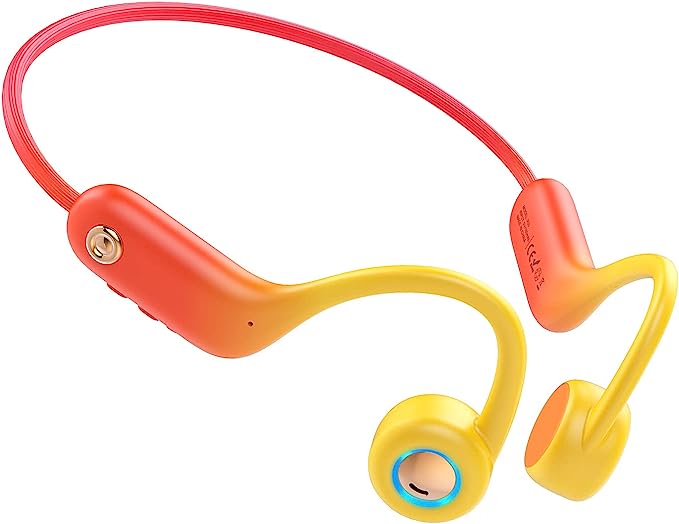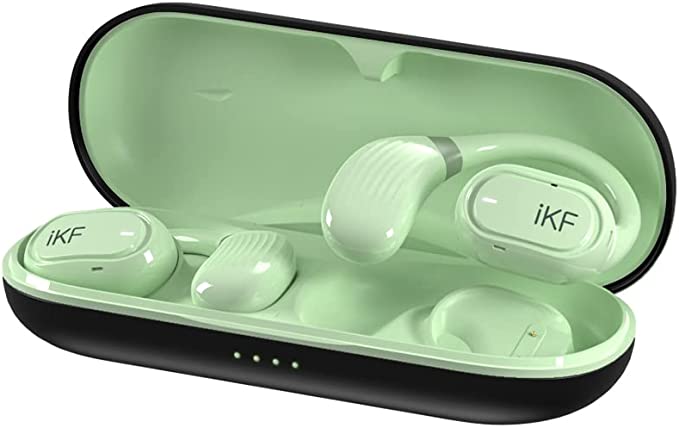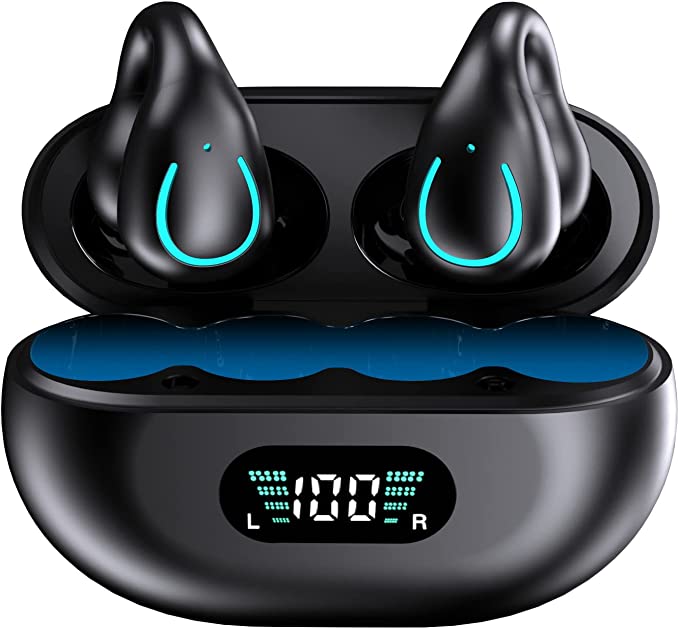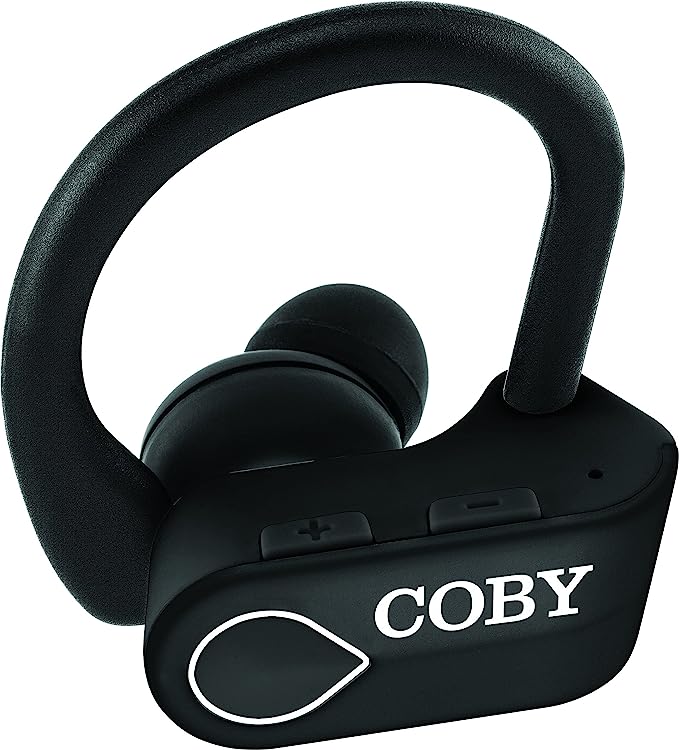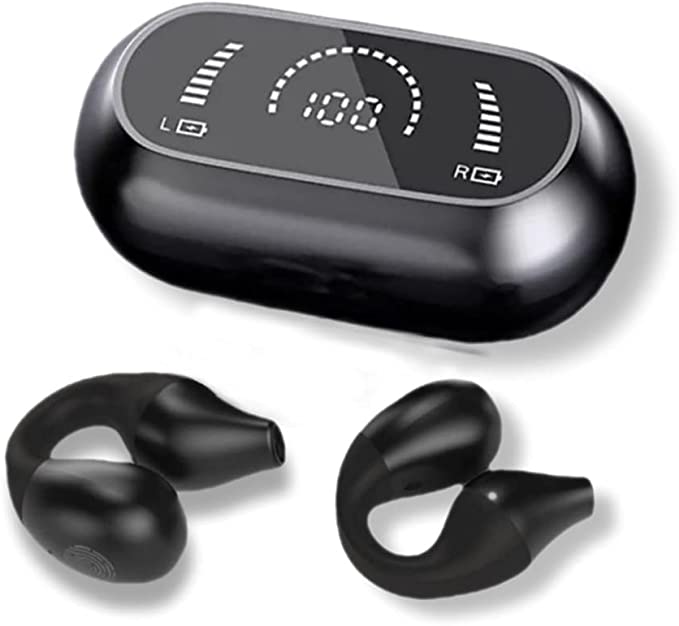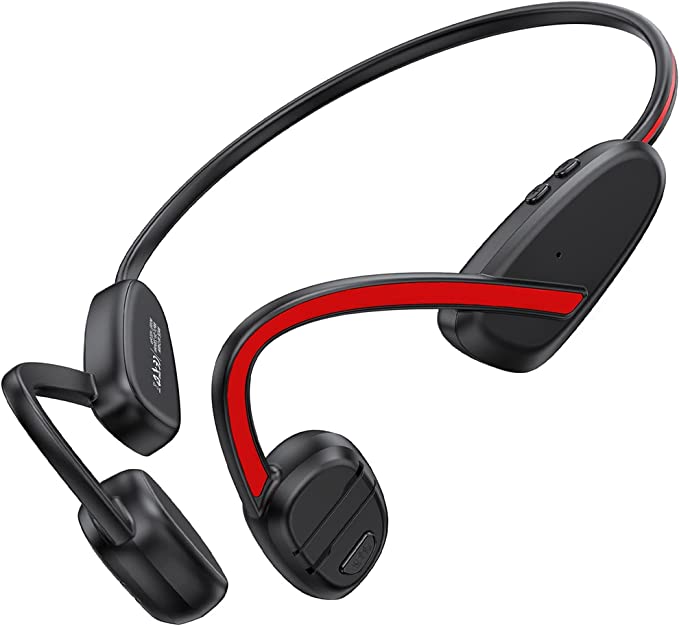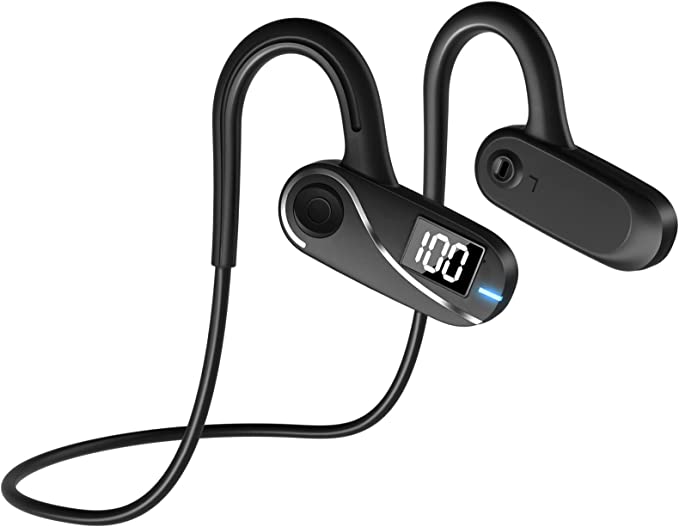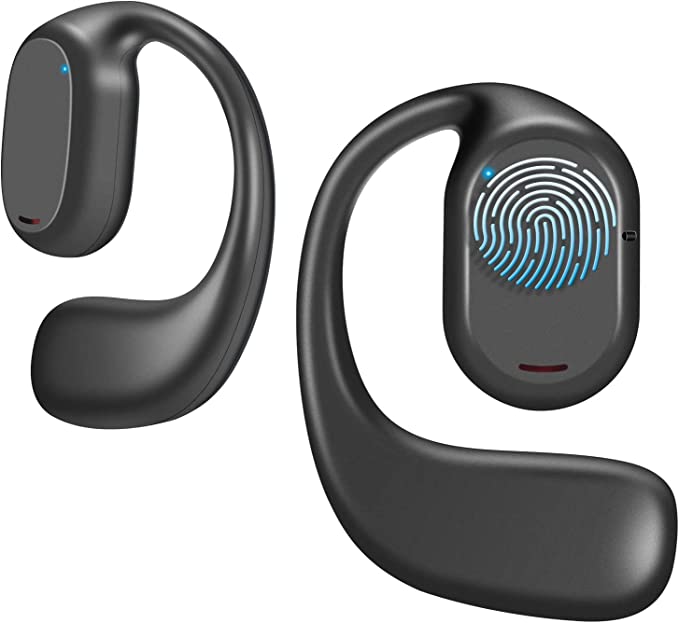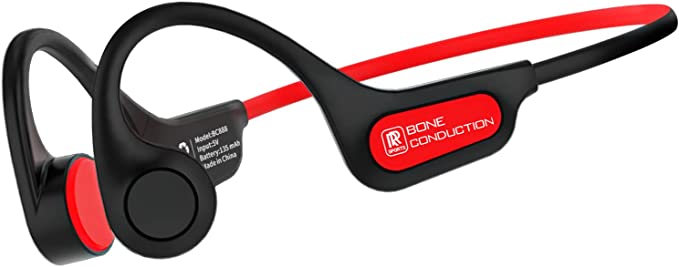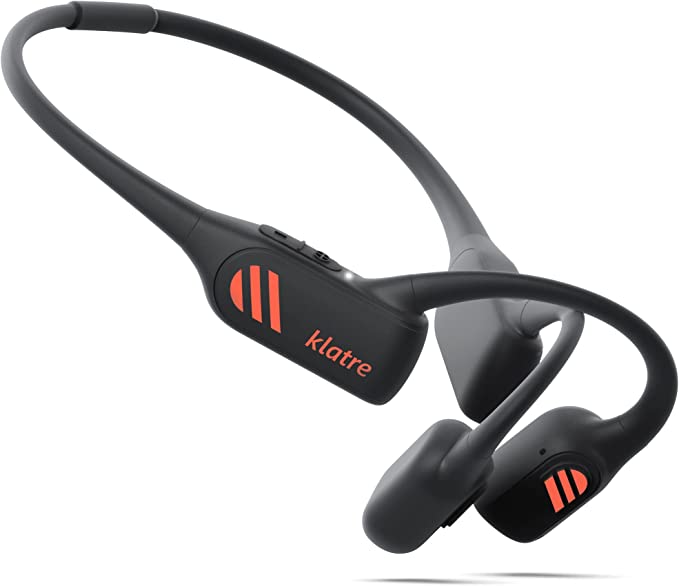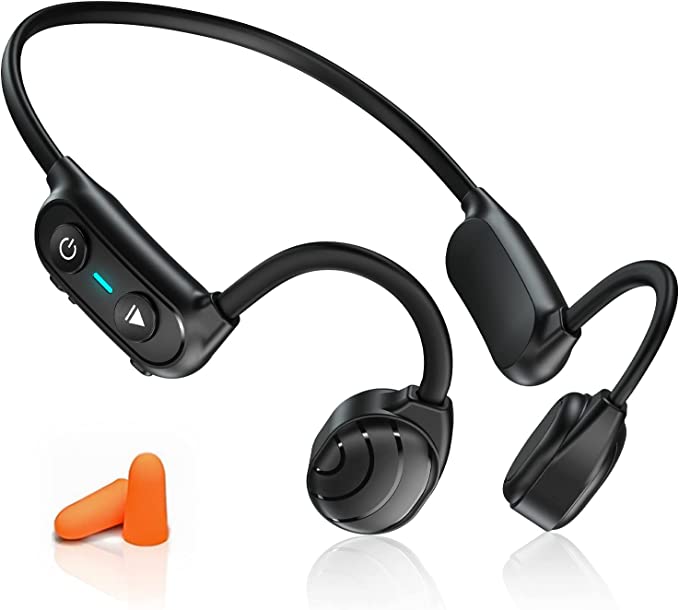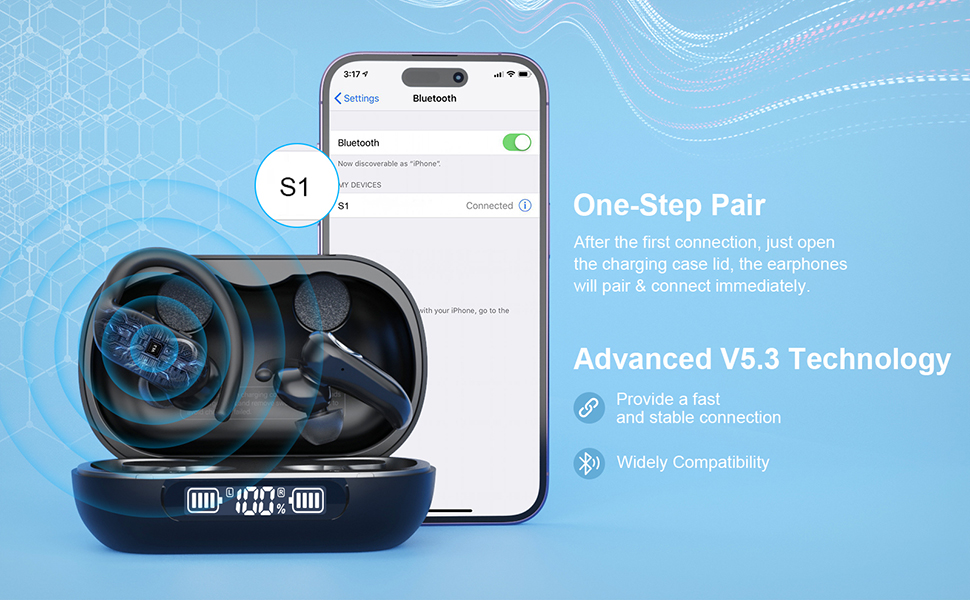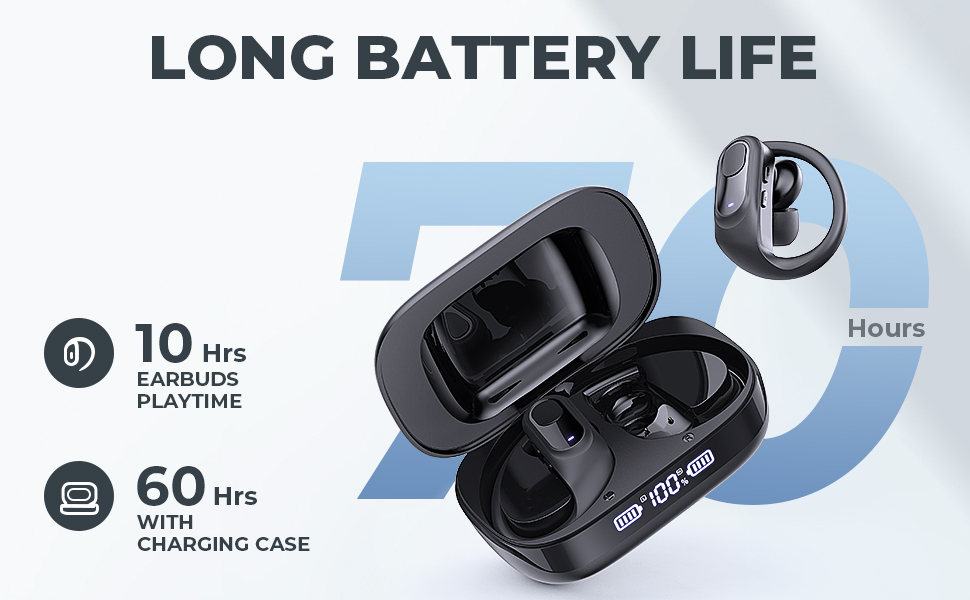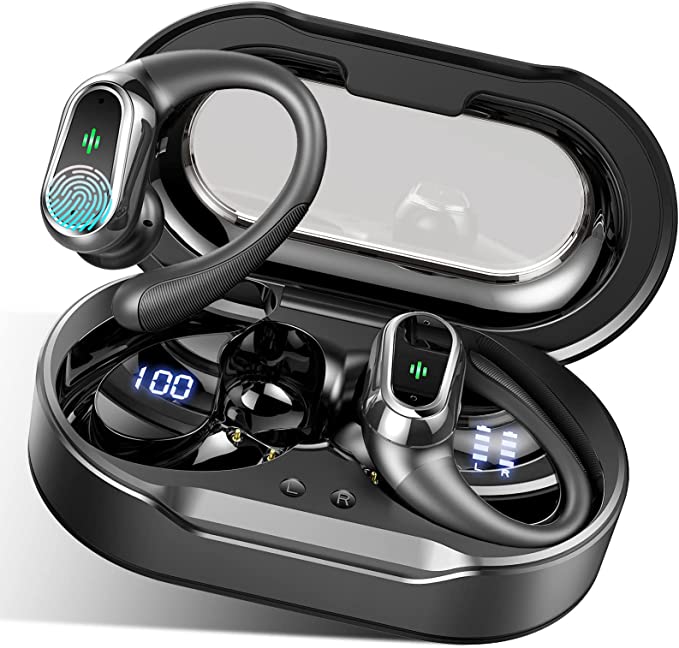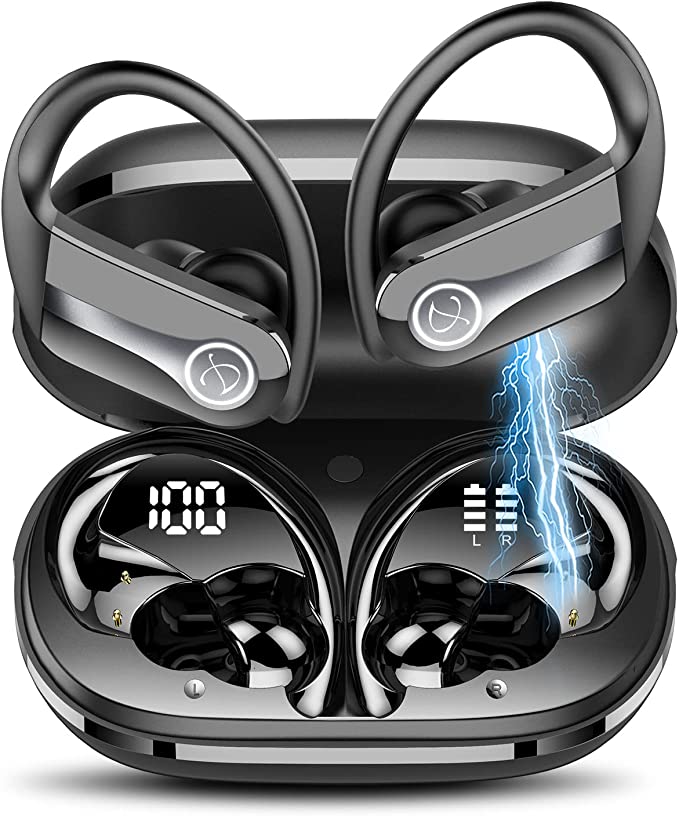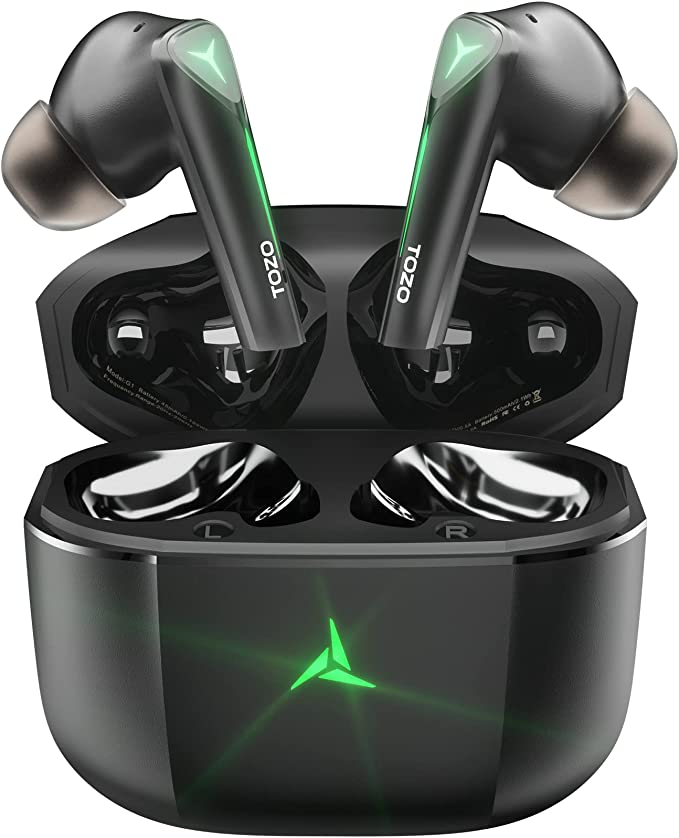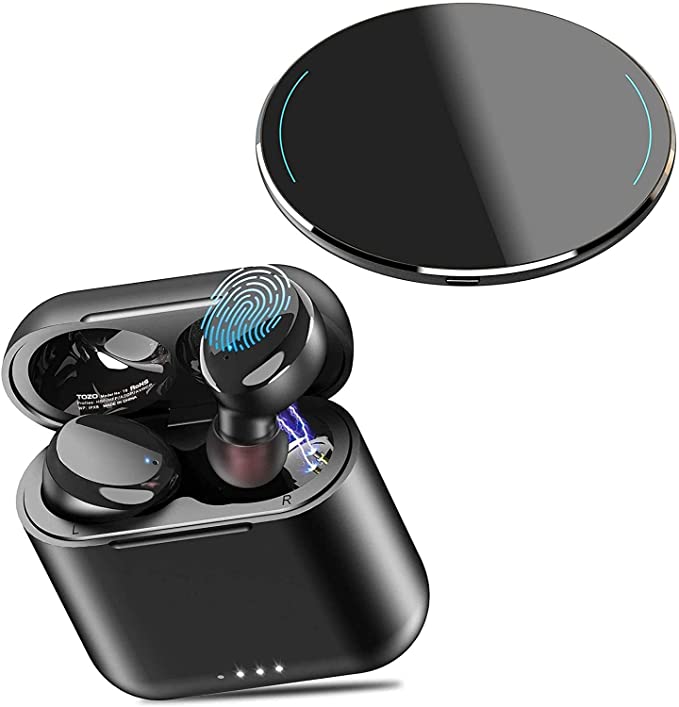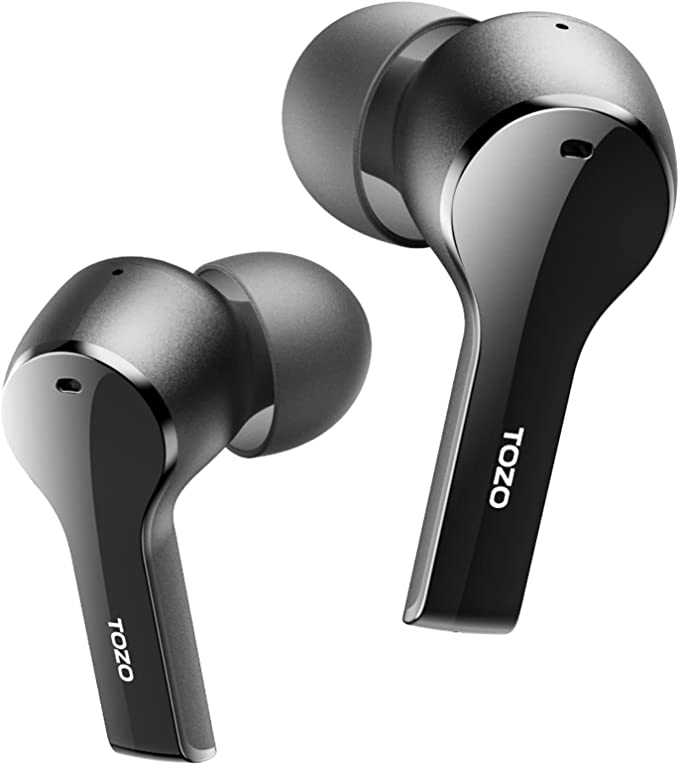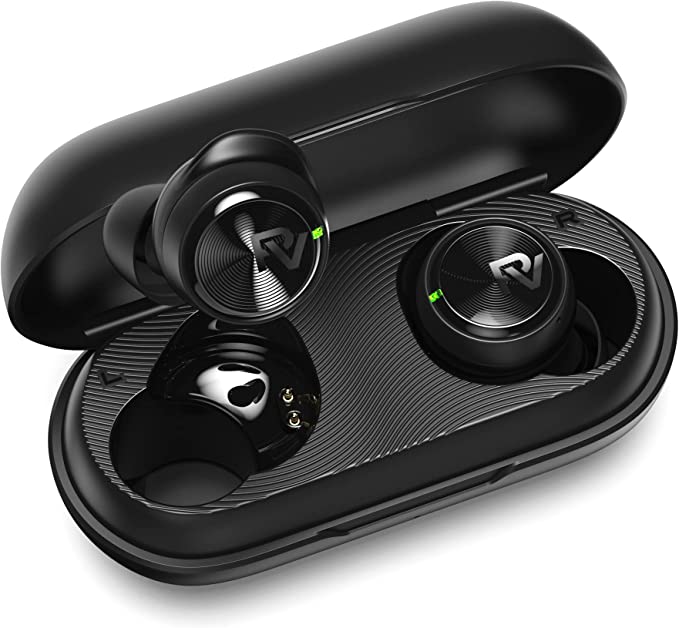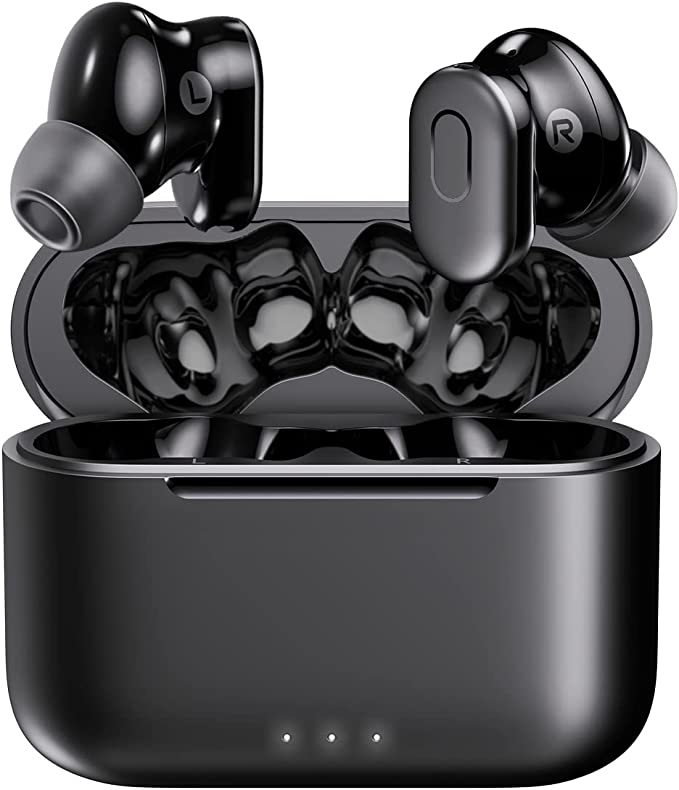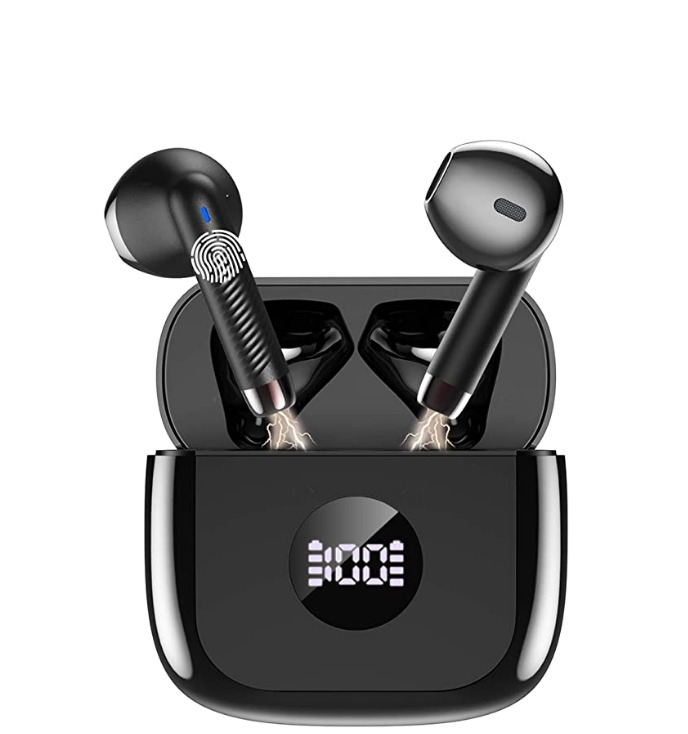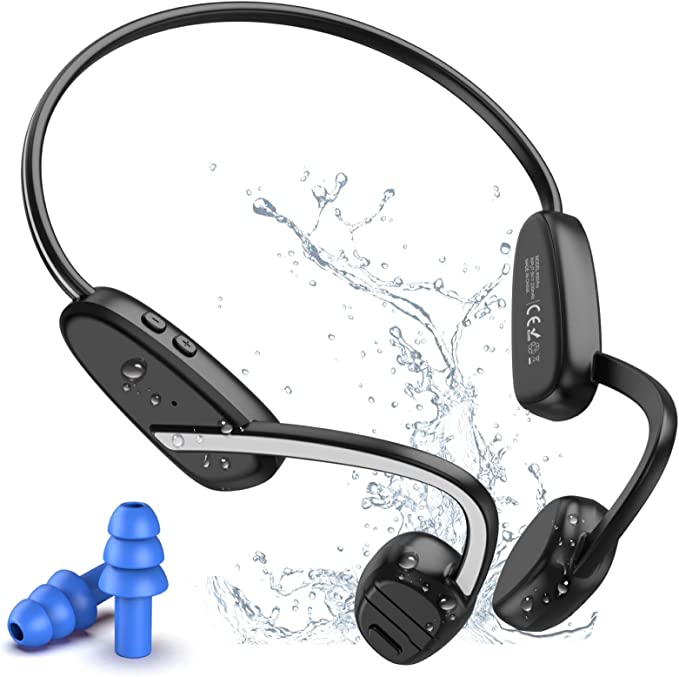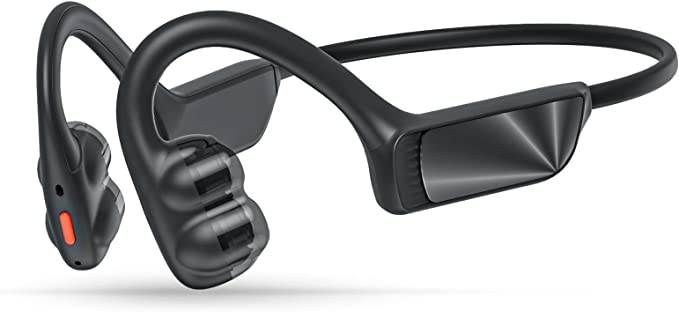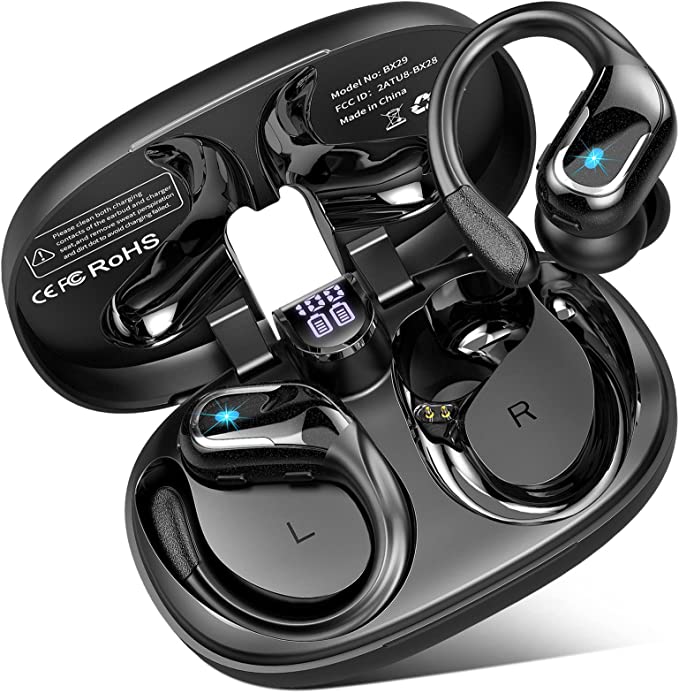Meseto F960 Open Ear Headphones: The Science of Situational Audio for Active North American Lifestyles
Update on May 14, 2025, 2:18 p.m.
In our modern lives, we orchestrate a complex symphony of activities, often desiring a personal soundtrack to accompany our endeavors – be it the energizing beat for a morning run, the immersive narrative of a podcast during a commute, or the clear voice on a call while navigating a busy day. Yet, this desire for personal audio frequently collides with a fundamental human need: to remain connected and aware of the world around us. Traditional headphones, while offering auditory escape, can build walls of silence, isolating us from crucial environmental cues. It’s this very dichotomy that has spurred a fascinating evolution in personal audio technology, leading us to the burgeoning realm of “open-ear listening.” Today, I invite you to join me on an investigative journey into this domain, using a specific product, the Meseto F960 Open Ear Wireless Air Conduction Headphones, as our specimen to dissect and understand the science, the claims, and the user experience.

The Great Conduction Debate: Unraveling the Meseto F960’s Sonic Signature
One of the most intriguing aspects of some open-ear audio devices is their method of sound delivery. The Meseto F960, according to its product information, employs “BONE CONDUCTION TECHNOLOGY,” promising to deliver audio “through the cheekbones.” Let’s pause here, as this is a significant claim worthy of scientific scrutiny.
True bone conduction is a remarkable auditory pathway. Instead of sound waves traveling through the air down your ear canal to vibrate the eardrum, bone conduction transducers (small plates or pads) sit directly on the bones of the skull, typically the cheekbones or mastoid bones behind the ear. These transducers convert electrical audio signals into mechanical vibrations. These vibrations then travel directly through the skull bones to the cochlea – the spiral-shaped, fluid-filled organ of the inner ear where sound is actually processed and sent to the brain. Think of Ludwig van Beethoven, who, as his hearing waned, famously bit onto a rod connected to his piano to “hear” the music through the vibrations conducted by his jawbone. That’s a raw, historical example of the principle. For the listener, true bone conduction leaves the ear canal completely open, allowing ambient sounds to be heard naturally and simultaneously with the conducted audio.
However, when we examine the user feedback for the Meseto F960, a different story emerges. A consistent chorus of users, as per the provided Amazon product page, disputes the bone conduction claim. Comments like “definitely not ‘bone conducting’,” “NOT bone conduction, just really crummy speakers in front of the ear,” and “This is not a bone headphone” are quite direct. Users in other languages echo this: “No son de conducción osea.” This consistent user perception is a critical piece of data in our auditory detective story.
Furthermore, the typical physical design of true bone conduction headphones involves flat transducers that press firmly against the bone. The descriptions and user comments for the F960 (such as “speakers in front of the ear”) strongly suggest a different architecture: small audio speakers positioned near the opening of the ear canal, but not sealing it.
Based on this confluence of evidence – user testimony and inferred physical design – it is scientifically far more plausible that the Meseto F960 operates primarily via air conduction, utilizing these strategically placed mini-speakers to direct sound waves towards the eardrum through the air, much like conventional headphones, but without occluding the ear canal. This approach still achieves the primary benefit of an open-ear design: you can hear your audio while remaining aurally connected to your surroundings. It’s crucial to distinguish this, as while the marketing may use “bone conduction,” the underlying engineering and user experience seem to point to a well-established method of near-ear air conduction. Both can offer situational awareness, but the pathway to the cochlea is different. Clarity in terminology is paramount for understanding what a technology truly offers.

Wireless Whispers: The Science and Subtlety of Bluetooth 5.3
Regardless of how sound ultimately reaches your inner ear, it first needs to travel wirelessly from your source device to the headphones. The Meseto F960 states it uses Bluetooth 5.3. To many, this might just seem like a slightly higher number than previous versions, but these incremental updates often bring tangible benefits.
Bluetooth, at its core, is a short-range wireless communication protocol that allows devices to exchange data. Version 5.3, building upon its predecessors, incorporates features aimed at enhancing connection stability, improving energy efficiency, and bolstering security. For instance, Bluetooth 5.3 includes enhancements in channel classification, where the headset can better identify and avoid channels that are experiencing interference, leading to a more stable audio stream with fewer dropouts. Imagine data packets navigating a busy highway; Bluetooth 5.3 acts like an improved traffic management system, finding clearer lanes for your audio data to travel smoothly.
Furthermore, aspects of Bluetooth 5.3 contribute to better power management, especially when interacting with devices that also support Low Energy (LE) audio features. This efficiency means that the headphones can potentially eke out more playback time from their internal battery, a critical factor for any portable device. For the user, these under-the-hood advancements translate to a more seamless and reliable listening experience – your music or podcast is less likely to stutter as you move, and your headphones might last just that bit longer between charges.
Braving the Elements (and Effort): Deconstructing the IPX5 Fortress
An active lifestyle invariably involves encounters with moisture – be it perspiration during a vigorous workout, an unexpected rain shower on a hike, or an accidental splash from a water bottle. This is where a product’s resilience, often quantified by an Ingress Protection (IP) rating, becomes vital. The Meseto F960 claims an IPX5 rating, described as “Completely sweat and waterproof.”
Let’s decode “IPX5.” The “IP” stands for Ingress Protection. The “X” indicates that the device has not been specifically rated for protection against solid particle ingress (like dust). This isn’t uncommon for audio devices where the primary concern is moisture. The critical digit here is the “5.” According to the international IEC 60529 standard, an IPX5 rating signifies that the enclosure is protected against low-pressure water jets projected by a nozzle (6.3 mm) from any direction.
Visualizing this, an IPX5-rated device should comfortably withstand being sprayed with water. In practical terms, this means the Meseto F960 should indeed be resistant to sweat, no matter how intense your exercise, and can handle being caught in the rain. It’s akin to a trusty lightweight raincoat for your electronics – it’s not designed for submersion (so, no swimming with them), but it offers robust protection against the everyday moisture exposures an active individual might encounter. Manufacturers achieve this through careful engineering of the casing, using seals around openings, and sometimes applying hydrophobic coatings to sensitive internal components. For the user, an IPX5 rating offers peace of mind, allowing you to focus on your activity without undue worry about your audio gear succumbing to the elements.

The Unbearable Lightness of Listening: Ergonomics and Enduring Power
The physical interaction between a wearable device and the human body is a delicate dance of physics and physiology. The Meseto F960 is listed as weighing a mere 0.63 ounces (approximately 18.8 grams). To put this into perspective, it’s lighter than a handful of standard Bic pens. In the realm of wearable technology, particularly for devices intended for prolonged use during dynamic activities, minimizing weight is paramount. Lighter headphones reduce strain on the ears and surrounding contact points, significantly enhancing long-term comfort and reducing user fatigue.
The product description mentions a “full wrap-around format” that “hugs your head and right behind the ears.” This design speaks to ergonomic principles aimed at stability and even weight distribution. By extending support around the back of the head and over the ears, such designs can prevent the headphones from shifting or dislodging during activities like running or cycling. User feedback from the Amazon source reflects this, with several users praising the comfort, one even describing them as “pencil lead thin and very comfortable,” particularly beneficial for someone also wearing hearing aids. Of course, fit is highly personal, and one user did note a looser fit, reminding us that anatomical differences play a role in perceived comfort.
Powering this lightweight experience is a 150mAh (milliampere-hour) lithium battery. mAh is a measure of electrical charge and, consequently, energy storage capacity. The F960 claims this battery provides up to 7 hours of music playback or 8 hours of call time, with a standby duration of 140 hours. For many users, this translates to several workouts, a full day of intermittent use, or a couple of long listening sessions before a recharge is needed. The efficiency of modern lithium-ion battery chemistry, combined with the power-saving aspects of technologies like Bluetooth 5.3, contributes to achieving such performance from a relatively small power source.
The Soundscape of an Open Ear: Fidelity, Perception, and Purpose
Ultimately, headphones are about sound. The Meseto F960 is advertised with “High Sound Quality” and “dynamic range and deep bass.” Assessing audio quality is notoriously subjective, intertwined with personal preferences, the type of audio being consumed, and the listening environment. The user reviews from the Amazon source reflect this subjectivity, ranging from “great sound, especially the bass” to “sound quality is adequate but not great,” and even a rather critical “sound like when you drop an cheap dollar store headphone in a tin can.”
From a scientific standpoint, open-ear headphone designs inherently face different acoustic challenges compared to their sealed, occluding counterparts, particularly concerning bass reproduction. Deep, resonant bass often benefits from a sealed acoustic chamber around the ear, which allows for pressure build-up and more efficient transfer of low-frequency energy. Open designs, by their very nature, lack this seal. While clever acoustic engineering and digital signal processing (DSP) can certainly enhance the perceived sound quality and bass response in open-ear devices, the fundamental physics means there might be trade-offs compared to high-fidelity closed-back headphones.
This isn’t necessarily a flaw, but rather a design consideration tied to the primary purpose of such headphones. Is the goal to achieve absolute audiophile nirvana in a quiet, controlled environment? Or is it to provide a satisfying and enjoyable audio experience while maintaining that crucial connection to the ambient soundscape? For many users of open-ear headphones, the slight compromise in ultimate bass depth or acoustic isolation is a worthwhile exchange for the immense benefit of situational awareness and comfort.
Epilogue: The Informed Listener in an Age of Abundant Tech
The Meseto F960 Open Ear Wireless Headphones, like any piece of technology, represent a collection of engineering choices, scientific principles, and design compromises, all aimed at fulfilling a particular set of user needs. Through our exploration, we’ve seen how claims of “bone conduction” warrant careful, evidence-based scrutiny, and how the reality of near-ear air conduction can still effectively serve the open-ear paradigm. We’ve touched upon the invisible yet vital role of Bluetooth 5.3 in delivering sound reliably, the practical confidence an IPX5 rating can instill, and the delicate balance of lightweight ergonomics and battery endurance.
In an age where we are surrounded by an ever-increasing array of technological marvels, the ability to understand the science and design philosophy behind them is more than just an academic exercise. It empowers us. It allows us to move beyond marketing buzzwords and make informed choices about the tools that best integrate with and enhance our lives. Whether it’s the Meseto F960 or any other device, appreciating the intricate dance between technology, human perception, and our dynamic world enriches our experience and allows us to become not just consumers, but truly informed listeners.
